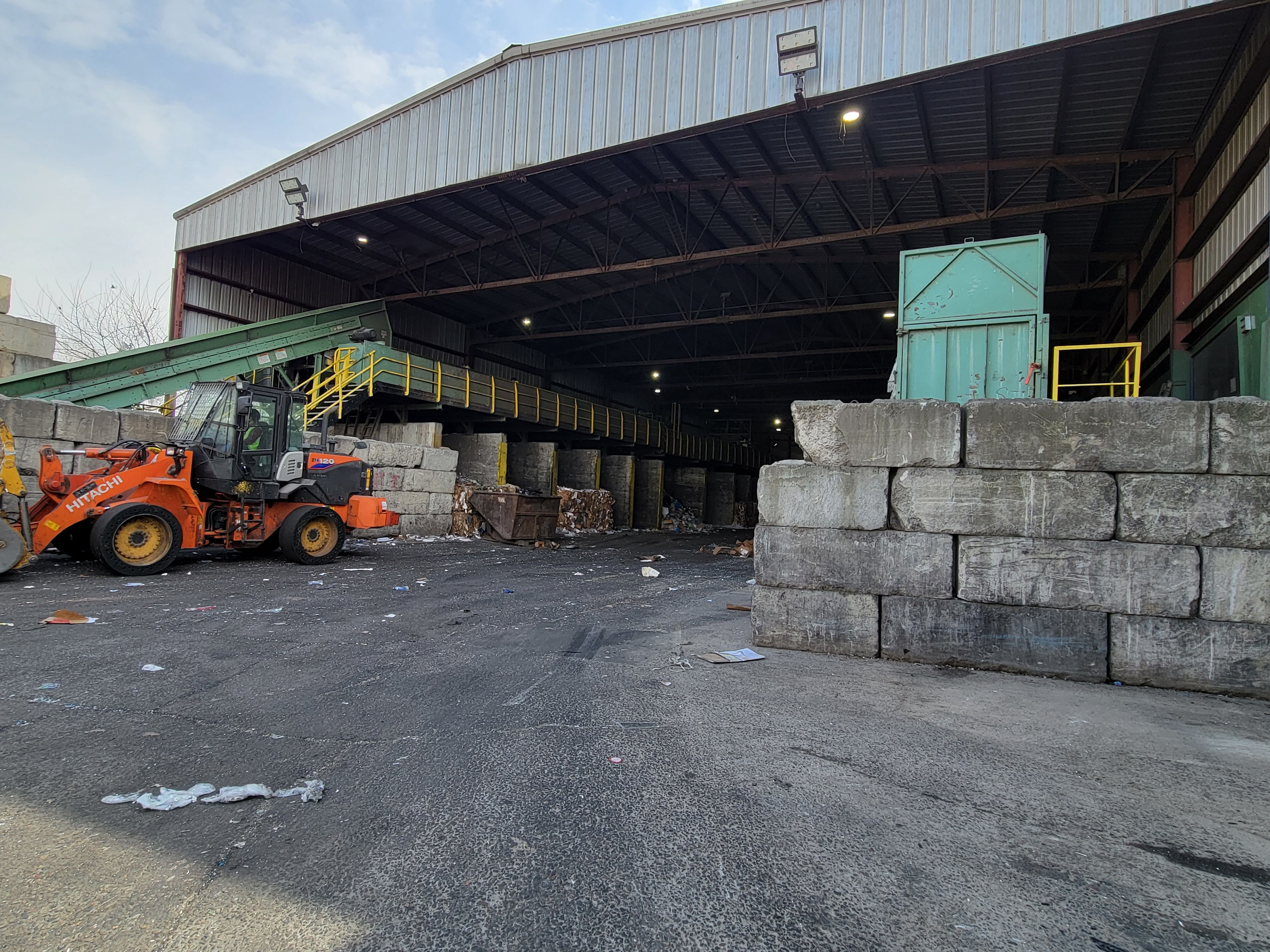30% of Municipal Solid Waste is compostable food and yard waste.

Empire State material recovery facility plant.
The Office of Energy & Sustainability recently visited WCM’s primary material recovery facility, Empire State Cardboard and Paper Recycling, in Maspeth, Queens. This sorting facility, owned and operated by Mike Cristina and his family since 2000, runs 24 hours a day, six days a week.
The plant consists of two parallel sorting lines; one has a mechanism to tear open plastic bags, and the other is operated by workers who manually open bags. All recycling/sorting is accomplished manually by operators. Each operator oversees the separation of a specific material.
Cardboard is the bulk of the waste that this facility receives (78%). Mike Cristina pointed out that not all cardboard is recyclable. Waxed cardboard is not recyclable because wax jams the paper machines at the paper processing facility and, therefore, is sent to landfills. White paper is the most valuable material for recovery, followed by metal, corrugated cardboard (delivery boxes), and finally, plastic and glass. Empire does not sort glass on-site but instead sends it to a specialized sorting facility that sorts by color. Plastics are sorted on-site into different types. Only plastics #1 (commonly found in water bottles), #2 (typically in milk jugs and detergent bottles), and #4 (can be used for shopping bags) are recycled by this facility. Plastic #4––soft plastics––can be accepted if they are accumulated separately from other recycling streams.

After being separated, all the materials are baled and sent to additional processors or recyclers that screen and process them further to sell to companies to use in their products. Empire State Recycling sends 85% of the material they receive to companies for recycling. Waste brokers buy and sell recycling materials and decide the price of the waste commodity based on the current market.
The price of each material varies based on the market. Often, recycling market prices are negligible, and Empire State needs to pay to get rid of a specific material. Empire decides to recycle some specific materials based on their market value (high enough to make financial sense) and volume received (they receive enough quantity to make it worth selling).
 Different types of material sorted and baled.
Different types of material sorted and baled.During the tour, we learned that cardboard typically goes to India or South Asia. Plastic stays domestic and mainly goes to Virginia and Ohio. Whatever is not sold to brokers for recycling is brought by Empire to a Covanta Waste-to-Energy facility.
Empire State Cardboard and Paper Recycling team cares about the planet and implements zero-waste practices in their offices. In the sorting lines, they try to recycle as much material as possible.
Important facts we learned from our tour of Empire Material Recovery Facility:
- Food is the main source of contamination. No food remnants should be in containers. All containers should be previously rinsed to be recycled. They have had cases in which buyers rejected the entire shipment of plastic because they could see or smell food contamination. Therefore, if it is not possible to rinse out dirty containers, we encourage all students and staff to place those items in the trash to avoid contaminating clean recycling.
- The market for waste consumables varies, and a material that is valuable today may be worth nothing the next month. Likewise, a material worth nothing today may be valuable next month. Therefore, even if only plastic #1, 2, and 4 are recycled at this time, standards may change in the future. We encourage students and staff to purchase products made with recycled and/or recyclable content when possible.
